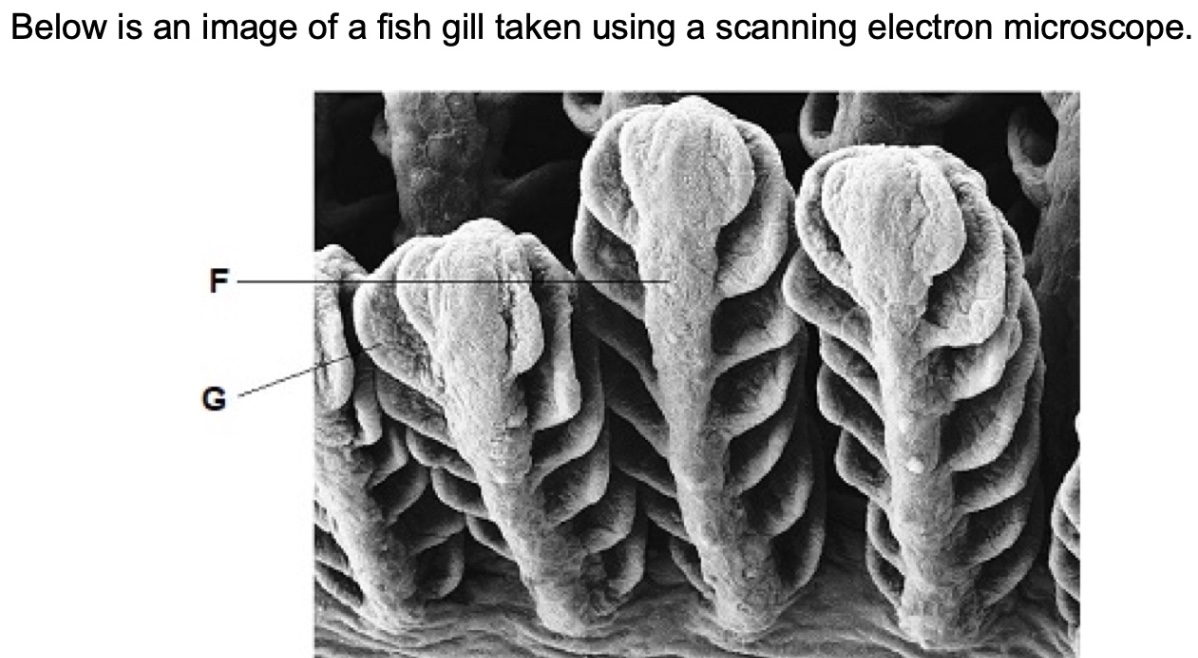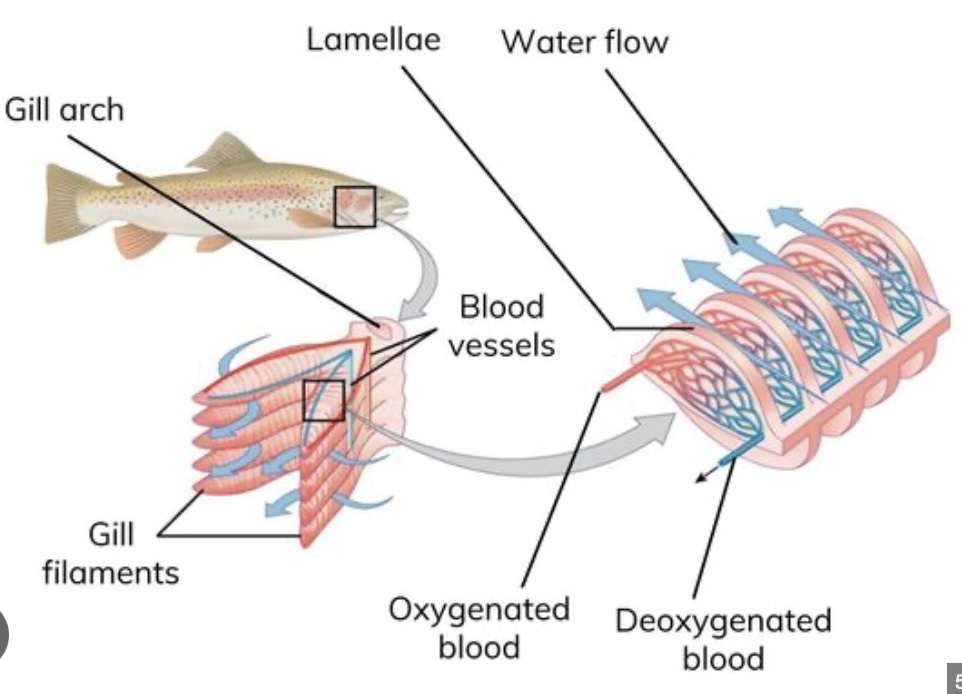gas exchange - fish
1/6
There's no tags or description
Looks like no tags are added yet.
Name | Mastery | Learn | Test | Matching | Spaced |
|---|
No study sessions yet.
7 Terms
gas exchange in fish
small SA:V therefore require a specialised gas exchange surface - gills
made up of gill filaments
at right angles to the gill filaments are gill lamellae

Identify structures labelled F and G.
F = filament
G = secondary lamellae
counter current flow
- flow of water and blood over gill lamellae in opposite directions → maximum gas exchange
- maintains diffusion gradient of oxygen
- diffusion along entire length of lamellae
- this allows about 80% of oxygen to be absorbed by the fish
why do fish require a gas exchange surface?
fish are waterproof (have a waterproof, thus gas tight, outer layer covering) and have a small SA:V (cuz they’re relatively large)

fish gill anatomy
- 4 layers of gills on both sides of the head
- gills are made up of stacks of gill filaments
- each gill filament is covered in gill lamellae, positioned at right angles to the filament
- this creates a large SA
- when fish open their mouths, water rushes in and over the gills and then out through a hole in the sides of their heads
adaptations for efficient gas exchange in fish
- large SA:V created by many gill filaments covered in many gill lamellae
- short diffusion distance due to capillary network in every lamellae and very thin gill lamellae
- maintaining concentration gradient countercurrent flow mechanism
Explain 2 ways in which the structure of fish gills is adapted for efficient gas exchange.
1. many lamellae so large surface area;
2. thin surface so short diffusion pathway;